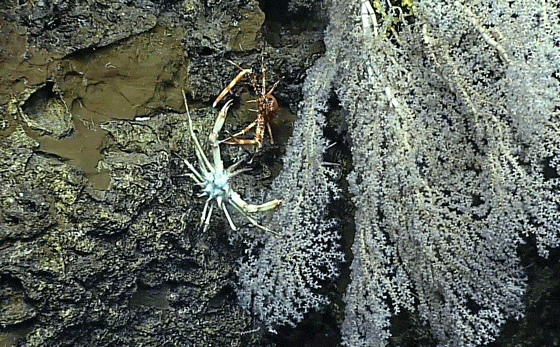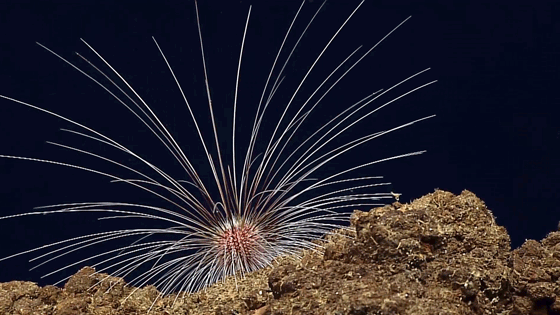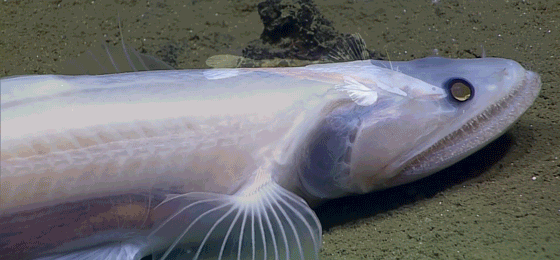On July 10, the National Oceanic and Atmospheric Administration’s Okeanos Explorer completed a 69-day, 3-stage expedition of previously unknown and poorly understood deepwater habitats.
The first leg, exploring the southern half of the Marianas Trench Marine National Monument and the Commonwealth of the Northern Mariana Islands, wrapped up on May 11. See some of their incredible finds here: 10 Stunning Undersea Creatures From the Deepwater Exploration of the Marianas
This last leg explores the northern half of these protected marine areas. Scientists captured images and video of many of the incredible creatures that live at these extreme depths, some of them never seen before or found thriving in unexpected places.
Due to its remote location, this area remains one of the “last relatively pristine marine ecosystems on the planet,” reports NOAA.
Aphyonid

This tiny ‘ghost fish’ is the first of its family, Aphyonidae, to be observed alive. It has transparent, gelatinous skin, no scales, and pigement-less eyes. This fish was on the “bucket list” of many scientists watching the expedition, says fishery biologist Bruce Mundy.
Spider Crab

Two crabs fighting, including a white spider crab, from the genus Rochinia, on the first-ever exploration of the outer edge of the volcanic Maug cone.
Bubblegum Coral

It’s easy to see how this brightly colored coral got its name. The green strands look like a plant, but they can’t be—due to lack of light, plants are not found at these depths. Scientists hypothesized that they could be a species of sponge or possibly drifting algae. A brittle star can be seen tightly wrapped around the center.
Frog Fish

The frog fish, a Chaunax in the image above, is a type of angler fish. Squatting on the sea floor, it draws its prey close to its enormous mouth by wiggling a lure that extends out from between its eyes. It has modified fins that act like feet, allowing it to walk along the sea floor.
Alicia Anemone

This rare anemone, possibly in the genus Alicia, was found along the Ahyi Seamount, a string of active submarine volcanoes. The anenome, seen here with tentacles retracted, extends its tentacles at night to hunt.
Chamorro Vent

An unexpected discovery came in the form of a hydrothermal vent community in an area that had no known historic eruptions. The super heated water streaming from this vent contains minerals that sustain chemosynthetic bacteria, which in turn support communities of corals, snails, and shrimp.
Long-Spined Sea Urchin

This well-protected urchin with incredibly long, flexible spines, was found on a crater along the side of the Eifuku Seamount, at a depth of about 500 meters.
Cusk Eel

This bizarre looking eel has a bulbous head with tiny eyes and a mouth placed so low it is almost underneath its body. These characteristics could mark it as a new species.
Acorn Worm

Found in a muddy area, dubbed Twin Peaks, this vibrant worm uses its acorn-shaped head to burrow into the sea floor.
Lizardfish

Lizardfish typically dwell on the sea floor, where they lie in wait for their prey. Its long, flattened head filled with teeth give it its name.
More Must-Reads from TIME
- Donald Trump Is TIME's 2024 Person of the Year
- Why We Chose Trump as Person of the Year
- Is Intermittent Fasting Good or Bad for You?
- The 100 Must-Read Books of 2024
- The 20 Best Christmas TV Episodes
- Column: If Optimism Feels Ridiculous Now, Try Hope
- The Future of Climate Action Is Trade Policy
- Merle Bombardieri Is Helping People Make the Baby Decision
Contact us at letters@time.com